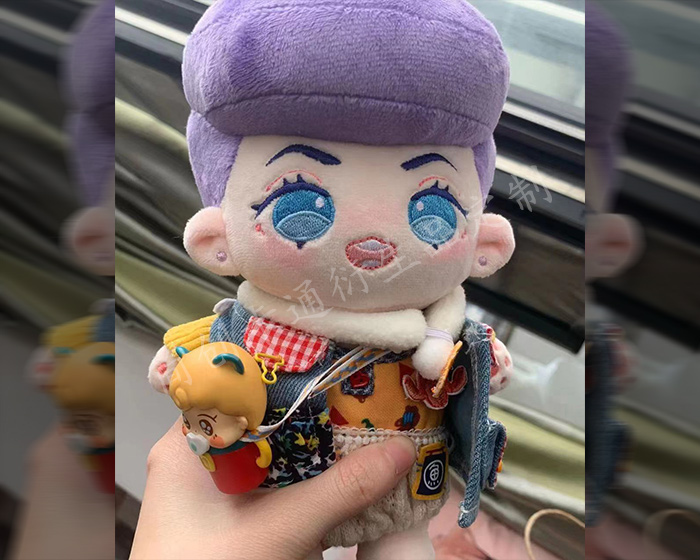stuffed animals are beloved companions for many, offering comfort and security. However, over time, you may notice that your cherished plush toy has developed lumps or unevenness. This can be frustrating, especially if the toy holds sentimental value. Understanding why this happens and how to address it can help restore your stuffed animal to its former glory.
1. Wear and Tear
One of the primary reasons a stuffed animal becomes lumpy is normal wear and tear. With regular use, the stuffing inside can break down, compress, or shift, leading to uneven distribution. Areas that are frequently hugged or squished may become flat, while other parts may remain fuller, creating a lumpy appearance. This is especially common in toys that are frequently washed or subjected to heavy use.
2. Moisture and Washing
Washing a stuffed animal is essential for hygiene, but improper washing or drying techniques can contribute to lumpiness. If a toy is not dried thoroughly after washing, moisture can cause the stuffing to clump together or retain its shape unevenly. Furthermore, using hot water or aggressive washing methods can damage the integrity of the stuffing material, leading to lumps.
3. Type of Stuffing Material
The type of stuffing used in a stuffed animal can also affect its texture and lumpiness. Common materials include polyester fiberfill, cotton, and foam. Polyester fiberfill, while soft and plush, can compress over time, leading to lumps. If the stuffing is made from natural materials like cotton, it may clump when wet or as it ages, creating uneven areas.
4. Lack of Maintenance
Regular maintenance is key to keeping stuffed animals in good shape. If a toy is not cleaned or fluffed regularly, dirt and debris can accumulate, causing the stuffing to compact and clump. Dust mites and allergens can also contribute to a lumpy texture if the toy has not been properly cared for.
5. Storage Conditions
The way a stuffed animal is stored can impact its shape. If a toy is left in a tight space or compressed under other items, it can lose its shape and develop lumps. Humidity and temperature fluctuations can also affect the stuffing, causing it to become uneven or clumpy over time.
How to Fix a Lumpy Stuffed Animal
If your stuffed animal has become lumpy, there are several steps you can take to restore it:
-
Fluff It Up: Gently shake and fluff the toy by hand. This can help redistribute the stuffing and reduce lumps.
-
Wash and Dry Properly: If the toy is machine washable, follow proper washing and drying instructions. Use a gentle cycle with cold water, and ensure it is thoroughly dried to avoid moisture retention.
-
Re-stuffing: If the lumpiness persists, consider adding new stuffing. You can carefully open a seam, add polyester fiberfill or cotton, and then sew it back up.
-
Regular Maintenance: Regularly vacuuming the toy or spot cleaning can help prevent dirt buildup and maintain its shape.
Conclusion
A lumpy stuffed animal can be a source of disappointment, but understanding the reasons behind the lumps can help you address the issue. By taking proactive measures and maintaining your plush companion, you can restore its original softness and shape, ensuring it remains a cherished source of comfort for years to come.
The following are some examples of plush toys that our factory customizes for customers. Check out if there is one that you like best.
-
Custom Animal Plush
-
Cute Plush Doll
-
Custom Stuffed Animals
-
Plush Toy
-
Plush Dolls
-
Custom Stuffed Dolls
-
Custom Plush Toy
-
Cotton Dolls
-
Weighted Plush Toys
-
Cute Stuffed Animals
-
Custom Pet Stuffed Animal
-
Warmies Stuffed Animals
-
Weighted Stuffed Animal
-
Soft Toys
-
Plush Stuffed Doll
-
Custom Stuffed Dolls
-
Plush Maker
-
Bear Stuffed Toy
-
Anime Plush
-
Custom Stuffed Animal
-
Anime Plush
-
Custom Plush Toy
-
Personalised Stuffed Animal
-
Plush Animal Toys
-
Custom Plush Makers
-
Custom Plushies
-
Toy Manufacturer
-
Rag Doll Making
-
Custom Toys
-
Dog Plush Toys
-
Custom Rag Doll
-
Stuffed Animals
-
Custom Plush
-
Custom Plush Dolls
-
20cm Cotton Doll
-
Jojo Plush
-
Custom Doll
-
Jojo Doll
-
Large Plush Toys
-
15cm Cotton Doll
-
Dumpling Plush
-
Cotton Doll


























